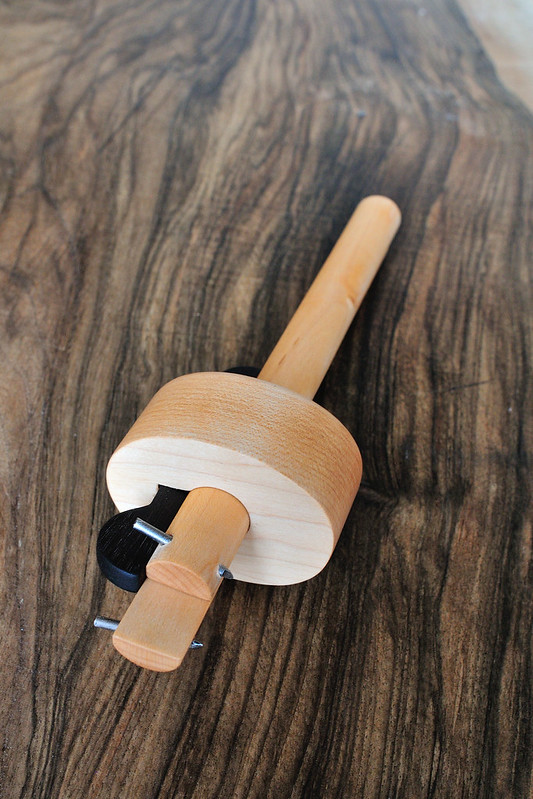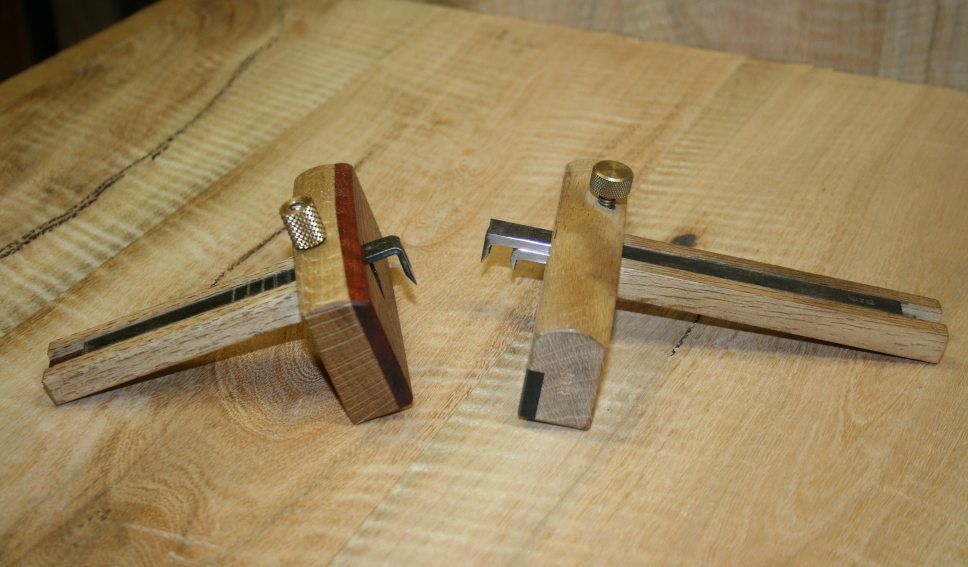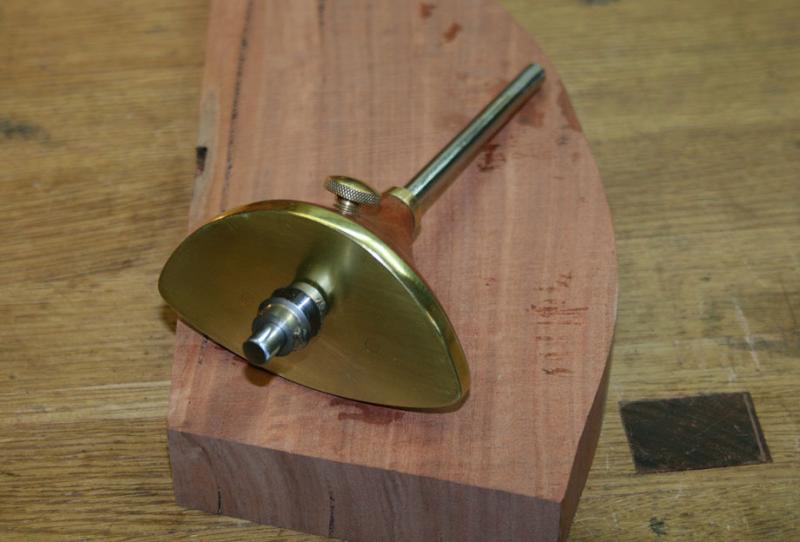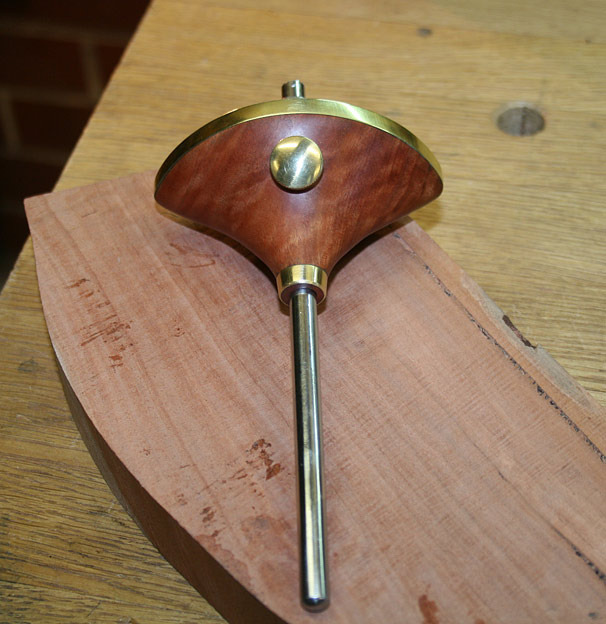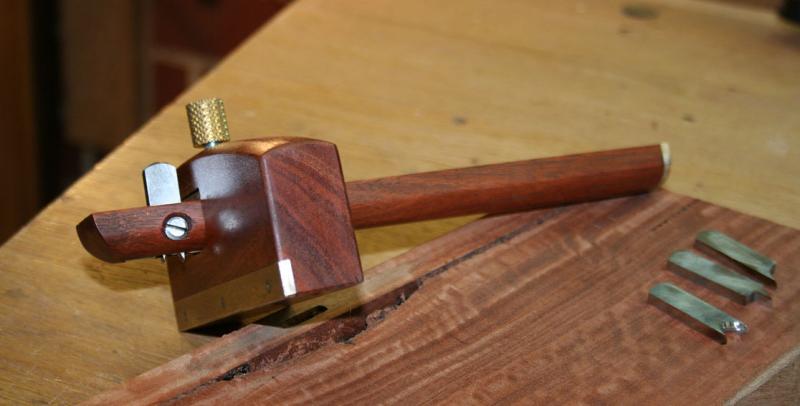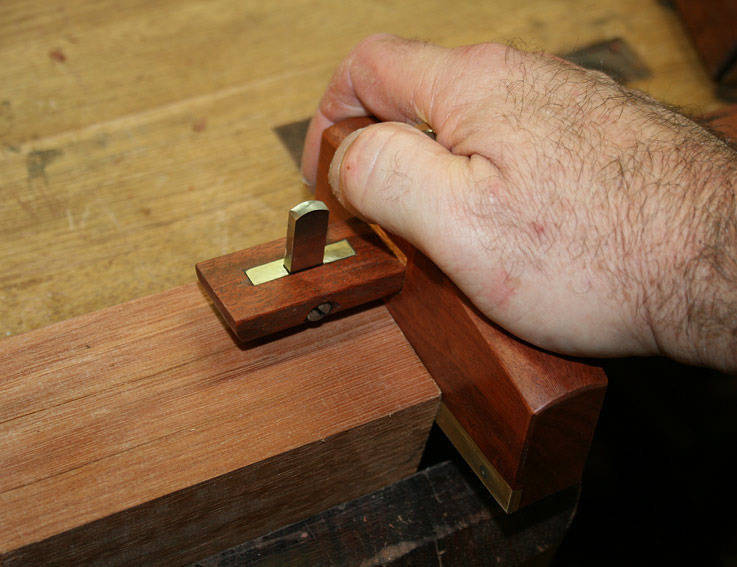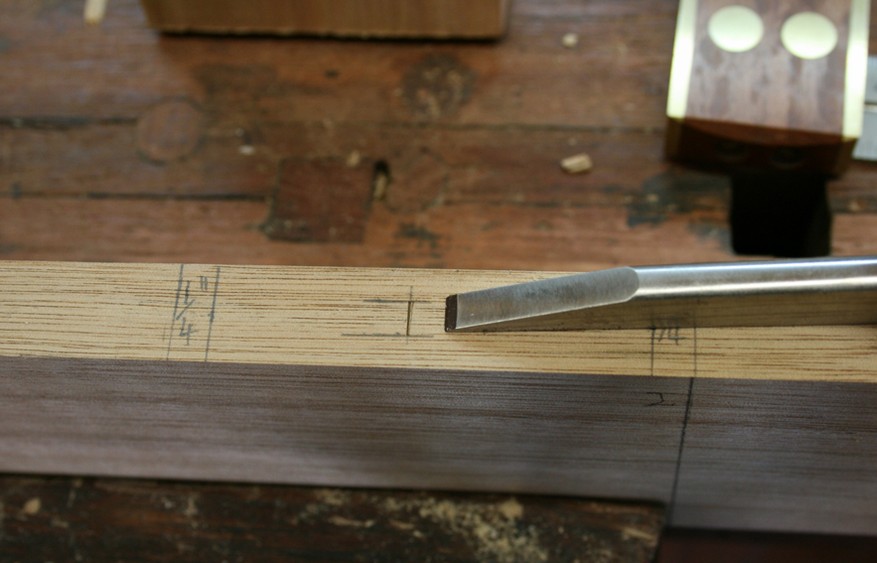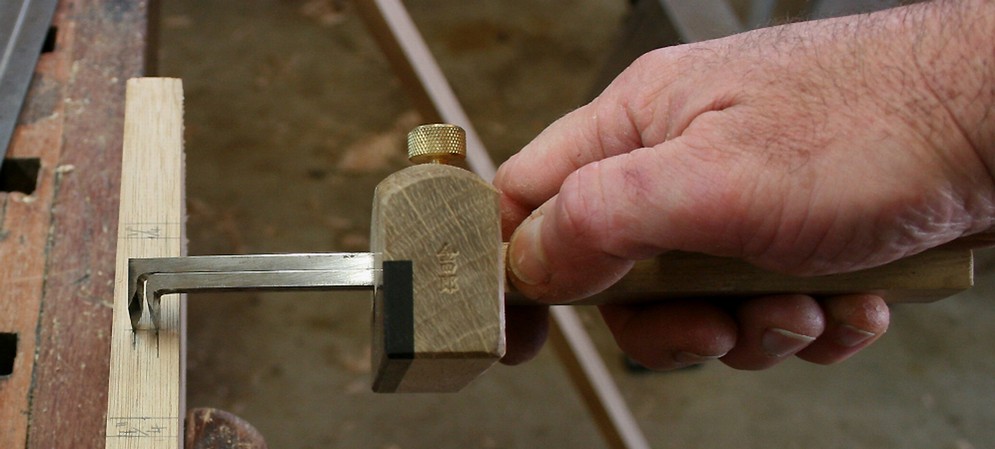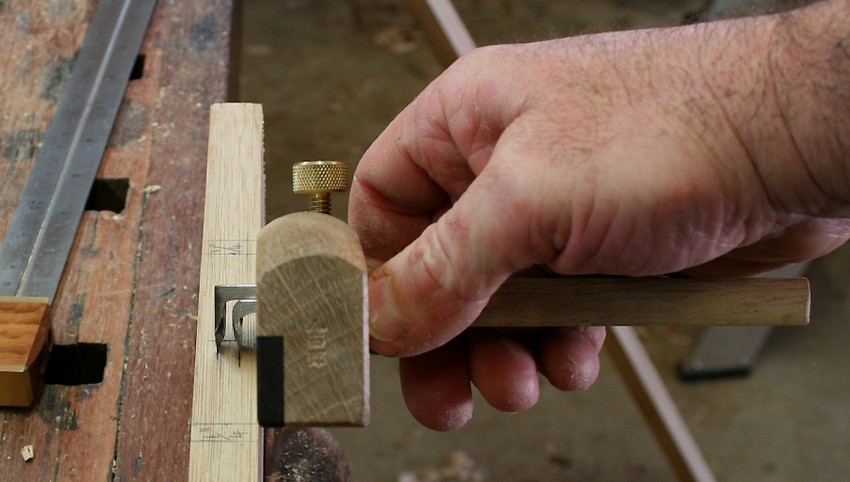Andy Kev.":2k7b60mm said:
Good Morning All,
I've decided that I need a mortice gauge (up to now I've got by with accurate marking and using a single Veritas wheel-type marking gauge). This should be a one off purchase so I would like to get the best I can which I reckon should mean that the chief qualites should be accuracy and robustness. Which model do you recommend?
Hi Andy
You could just get another wheel gauge and use them together. It would need to be a wheel gauge since working from the reference side would require a line that does not wedge the wrong side of the line. Veritas sell a double wheel gauge that has had good reviews.
Anyway, the very best mortice gauge I own is a Kinshiro. This has a double knife, cuts a clean, clear line ... but this one not made anymore (on the right) ..
The down side of this gauge is that the setting is lost as soon as you have offset mortice-and-tenons, such as in a table. One wants the head to move while the cutters remain fixed.
So I made two different types. One is the wheel type (actually using LN cutters) ...
The problem I have with this type of gauge is that the lines are very faint as you achieve little downforce.
A cutter is better, and so I made a fixed blade mortice gauge witth a moveable fence and cutters. Actually, I made replaceable cutters for my 1/4" and 3/8" mortice chisels ...
This retains the Japanese roots ...
Regards from Perth
Derek



































